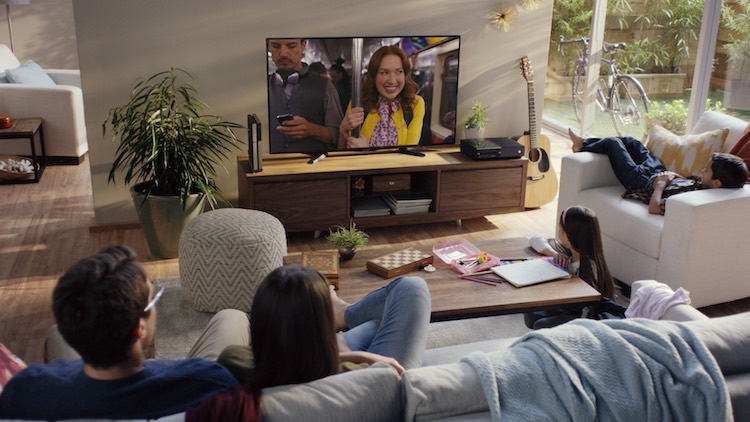Title II: The Internet’s Commercial Firewall

In 2015, Tom Wheeler’s Federal Communications Commission (FCC) proposed that the Title II provision of the 1934 Communications Act applied to the internet. In short, the FCC considered the internet a public monopoly and, by extension, should be subject to the 80-year-old policies designed to regulate the telephone monopoly, Ma Bell.
Colloquially, we refer to this invocation of Title II as “net neutrality,” the FCC’s official position since 2015.
The rationale behind this policy is rather elegant in its simplicity: that internet service providers shouldn’t be permitted to discriminate against content owners by leveraging their ability to speed up or slow down consumer internet speeds.
The U.S. is now more than two decades removed from its last substantive overhaul of policies governing the nation’s communications infrastructure and resources. The 1996 Telecommunications Act, signed into law by President Bill Clinton, paved the way for the access, innovation and spectrum optimization necessary to bring us to the modern user-value economy.
But few lawmakers in 1996 could have grasped the enormity of a 2017 internet. An internet capable of serving billions of latent-free 4K UHD streams wirelessly to VR goggles on our faces. An internet, in fact, whose spectrum is today almost entirely consumed by video.
And lawmakers most certainly couldn’t have envisioned such scale in 1934, which is why this lack of clarity serves in tentative support of Title II as a modern standard of regulation.
Enter Ajit Pai, the new Republican sheriff at the FCC. If you’ve ever wondered what modernized laissez-faire looks like, you’re about to see it.
Related: FCC's Ajit Pai Launches Effort to Repeal Title II
Pai has not minced words when it comes to reversing net neutrality in pursuit of an “open and free” internet. You need look no further than the Netflix-Comcast relationship to understand what an “open and free” internet will look like.
This could substantially augment the business of network carriage, positioning ISPs as industry toll booths across rapidly expanding lanes of traffic. Audiences that once “tuned” to TV programming in a “one-to-any” broadcast feed are finding their ways into the “one-to-device” economy of unicast streaming through connected TVs and linear streaming apps.
Simply put, a metered internet provides content distributors—specifically, content distributors that own the “last mile” of spectrum to the consumer—with leverage against the carriage fees the programmer currently collects from the distributor. This is an enormous chunk of most people’s $200-plus monthly cable bill.
In an “open and free” internet, the distributor can theoretically charge the programmer for dedicated bandwidth to ensure a satisfactory streaming experience, which in turn makes content cost-neutral to the distributor. That is, of course, if the distributor happens to also be the ISP.
If we look to the pre-network-neutrality precedent set by that Netflix and Comcast deal, where Netflix was able to structure a better consumer streaming experience across the Comcast footprint, the model suggests that an environment capable of supporting true a la carte may be knocking on the door.
A profound shift in the balance of power between content and distribution will be the necessary consequence of eliminating Title II’s governance of the internet. For better or worse, three sectors of the media landscape will be affected:
- First, this is a boon to traditional cable operators who also serve as most people’s ISP, via coax, fiber or wireless spectrum—the incumbent Multichannel Video Programming Distributors (MVPDs). They are content gateways through which consumers’ access, cost and quality of content engagement will be determined by the content originator’s metered internet terms, payable to the ISP/MVPD.
Such cost-neutralization of carriage for the traditional MVPD represents enormous advantages over virtual MVPDs, an industry effectively created by the FCC in 2014 when it reclassified the definition of MVPD to exclude any physical distribution infrastructure.
While virtual MVPDs may offer content access rivaling the incumbent MVPDs, they too would be subject to the costs of a metered internet, again, payable to the ISPs. No doubt, this would be a margin-crusher that would favor the incumbent MVPDs in a content price war. The FCC has yet to comment on how exactly this promotes competition.
Finally, there are the programmers whose very existence depends on bundled carriage revenues. Without the ability to offset the neutralization of carriage revenue with robust monetization of audience, the elimination of net neutrality may very well thin the herd of linear programmers. Who’s got time for bad TV anymore?
In the end, Ajit Pai’s vision for an open and free internet will likely result in outcomes marginally favorable to consumers. Content distribution is democratizing at an unbelievable rate, while audiences continue to balkanize across platforms and devices. So while consumers will soon be able to price shop providers in earnest, diversity in programming itself may be the first casualty of a new, open and free internet.
Randy Cooke is VP of programmatic TV at video ad inventory marketplace SpotX.
Broadcasting & Cable Newsletter
The smarter way to stay on top of broadcasting and cable industry. Sign up below



